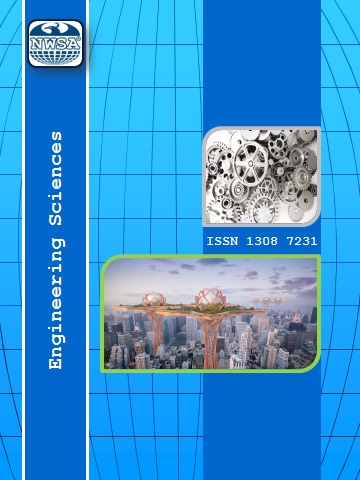References
[1] Xu, Y., Xing, G., Zhao, J., and Zhang, Y., (2021). The effect of polypropylene fiber with different length and dosage on the performance of alkali-activated slag mortar. Construction and Building Materials, 307, 124978. https://doi.org/10.1016/j.conbuildmat.2021.124978.
[2] Qin, Y., Zhang, X., Chai, J., Xu, Z., and Li, S., (2019). Experimental study of compressive behavior of polypropylene-fiber-reinforced and polypropylene-fiber-fabric-reinforced concrete. Construction and Building Materials, 194, 216225. https://doi.org/10.1016/j.conbuildmat.2018.11.042.
[3] Nasr, M.S., Shubbar, A.A., Abed, Z.A.-A.R., and Ibrahim, M.S., (2020). Properties of eco-friendly cement mortar contained recycled materials from different sources. Journal of Building Engineering, 31, 101444. https://doi.org/10.1016/j.jobe.2020.101444.
[4] Scrivener, K.L., John, V.M., and Gartner, E.M., (2018). Eco-efficient cements: Potential economically viable solutions for a low-CO2 cement-based materials industry. Cement and Concrete Research, 114, 226. https://doi.org/10.1016/j.cemconres.2018.03.015
[5] Kakooei, S., Akil, H.M., Jamshidi, M., and Rouhi, J., (2012). The effects of polypropylene fibers on the properties of reinforced concrete structures. Construction and Building Materials, 27, 7377. https://doi.org/10.1016/j.conbuildmat.2011.08.015.
[6] Aly, T., Sanjayan, J.G., and Collins, F., (2008). Effect of polypropylene fibers on shrinkage and cracking of concretes. Materials and Structures, 41, 17411753. https://doi.org/10.1617/s11527-008-9361-2.
[7] Zheng, Z., (1995). Synthetic fibre-reinforced concrete. Progress in Polymer Science, 20, 185210. https://doi.org/10.1016/0079-6700(94)00030-6.
[8] Salahaldein Alsadey, (2016). Effect of polypropylene fiber on properties of mortar. International Journal of Energy Science and Engineering, 2, 812.
[9] Akgül, M., Do?an, O., and Etli, S., (2020). Investigation of mechanical properties of granulated waste rubber aggregates substituted self-compacting concrete mortar produced with different cement. Uluslararasy Muhendislik Arastirma ve Gelistirme Dergisi 12, 787798. https://doi.org/10.29137/umagd.734614.
[10] Cemalgil, S. and Etli, S., (2020). Effects of specimen size on the compressive strength of rubber modified self-compacting concrete. International Journal of Pure and Applied Sciences 6, 118129. https://doi.org/10.29132/ijpas.789480.
[11] Etli, S., (2023a). Evaluation of the effect of silica fume on the fresh, mechanical and durability properties of self-compacting concrete produced by using waste rubber as fine aggregate. Journal of Cleaner Production, 384, 135590. https://doi.org/10.1016/j.jclepro.2022.135590.
[12] Etli, S., Cemalgil, S., and Onat, O., (2018). Mid-temperature thermal effects on properties of mortar produced with waste rubber as fine aggregate. International Journal of Pure and Applied Sciences. 4, 1022. https://doi.org/10.29132/ijpas.341413.
[13] Cemalgil, S., Onat, O., Tanaydyn, M.K., and Etli, S., (2021). Effect of waste textile dye adsorbed almond shell on self compacting mortar. Construction and Building Materials, 300, 123978. https://doi.org/10.1016/j.conbuildmat.2021.123978.
[14] Etli, S., (2022a). Investigation of the effect of glass sand used in SCC on the behavior of the scc stress- strain relationship. International Journal of Innovative Engineering Applications 6, 237244. https://doi.org/10.46460/ijiea.1108476.
[15] Etli, S., (2023b). Effect of glass sand used as aggregate on micro-concrete properties. Journal of the Croatian Association of Civil Engineers, 75, 3951. https://doi.org/10.14256/JCE.3538.2022.
[16] Gesoglu, M., Güneyisi, E., Hansu, O., Etli, S., and Alhassan, M., (2017). Mechanical and fracture characteristics of self-compacting concretes containing different percentage of plastic waste powder. Construction and Building Materials, 140, 562569. https://doi.org/10.1016/j.conbuildmat.2017.02.139.
[17] Etli, S., (2022b). Evaluation of curing time for micro concrete mixes containing silica fume, nano-silica and fly ash. Ystanbul Ticaret Üniversitesi Fen Bilimleri Dergisi, 21, 304316. https://doi.org/10.55071/ticaretfbd.1093891.
[18] Etli, S., Cemalgil, S., and Onat, O., (2021). Effect of pumice powder and artificial lightweight fine aggregate on self-compacting mortar. Computers and Concrete, 27, 241252. https://doi.org/10.12989/cac.2021.27.3.241.
[19] Hansu, O. and Etli, S., (2022). Beton ile üretilen suda yüzebilen kano tasarymy üzerine bir ara?tyrma. European Journal of Science and Technology, 330334. https://doi.org/10.31590/ejosat.1052105.
[20] TS EN, (2012). 197-1. CementPart 1: compositions and conformity criteria for common cements. Turkish Standard Institution.
[21] EFNARC, The European Project Group, (2005). The European Guidelines for Self-Compacting Concrete Specification, Production and Use. The European Guidelines for Self Compacting Concrete 63.
[22] TS EN, (2004). 9342. Admixtures for Concrete, Mortar and Grout-Part 2: Concrete Admixtures; Definitions, Requirements, Conformity,. Turkish Standard Institution 2004, 913.
[23] ASTM C348-02, (2002). ASTM C348-02 Standard test method for flexural strength of hydraulic cement mortars 7.
[24] ASTM C349-08, (2008). Standard test method for compressive strength of hydraulic-cement mortars (using portions of prisms broken in flexure). ASTM lnternational 14.
[25] ASTM C109/C109M, (2007). Compressive Strength of Hydraulic Cement Mortars (Using 2-in. or [50-mm] Cube Specimens). ASTM International 32, 21412147. https://doi.org/10.1520/C0109.
[26] Rößler, C., Bernd, M., and Horst-Michael, L., (2015). Characterization of cement microstructure by calculation of phase distribution maps from SEM-EDX mappings, in: 19. Internationale Baustofftagung Ibausil.
[27] Goldstein, J.I., Newbury, D.E., Michael, J.R., Ritchie, N.W.M., Scott, J.H.J. and Joy, D.C., (2018). Scanning Electron Microscopy and X-Ray Microanalysis. Springer New York, New York, NY. https://doi.org/10.1007/978-1-4939-6676-9.
[28] Dodds, L., (2013). Microstructure characterisation of ordinary Portland cement composites for the immobilisation of nuclear waste (Doctoral dissertation). The University of Manchester, United Kingdom.
 +90(535) 849 84 68
+90(535) 849 84 68 nwsa.akademi@hotmail.com
nwsa.akademi@hotmail.com Fırat Akademi Samsun-Türkiye
Fırat Akademi Samsun-Türkiye
